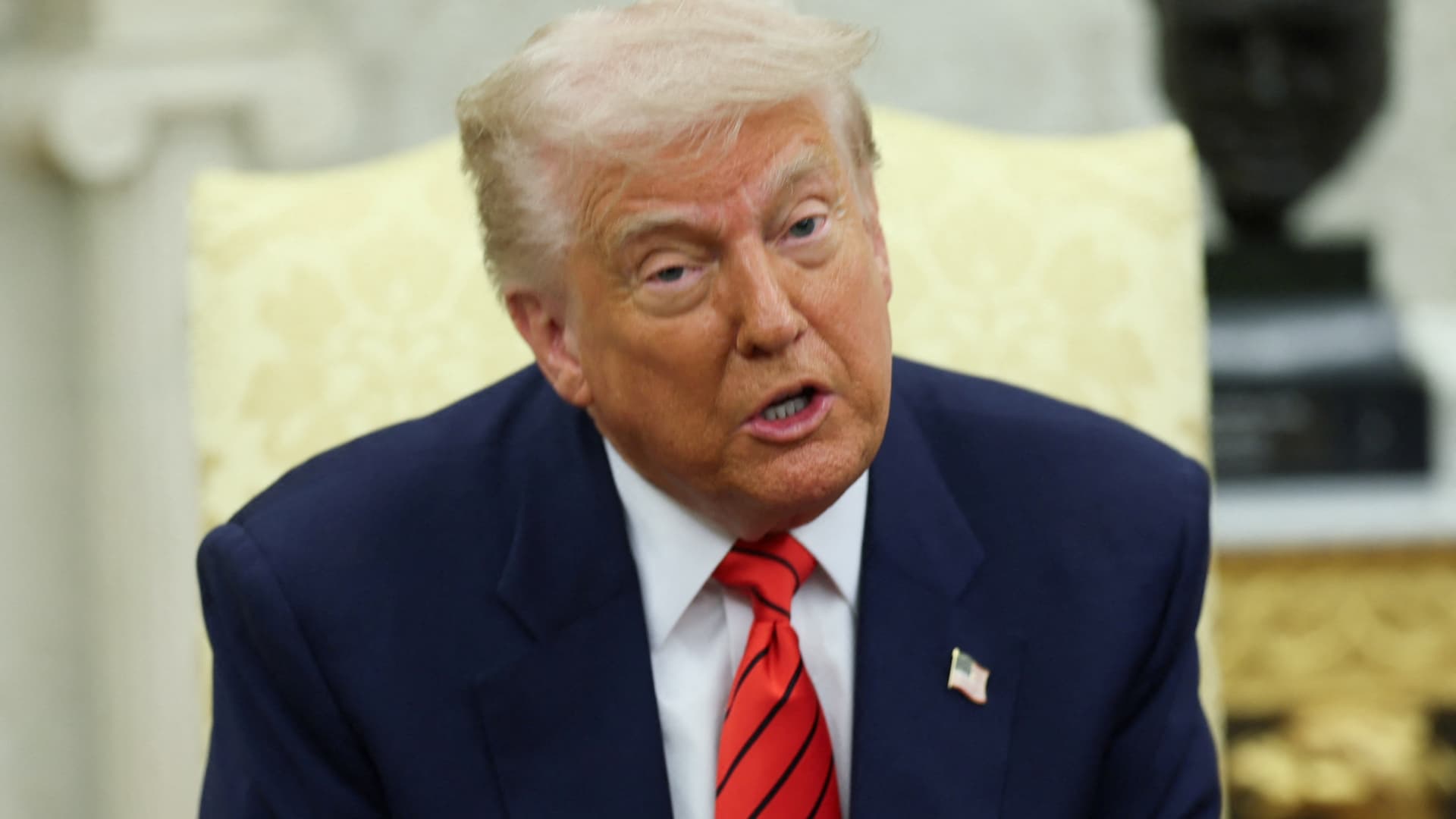The Complex Landscape of Trump’s Tariff Talks
A Global Economy on Edge
In the ever-evolving saga of U.S. President Donald Trump’s tariff policies, the world has witnessed a whirlwind of mixed signals, strategic gambits, and global repercussions. The trade landscape is a labyrinth of progress and setbacks, as nations grapple with the unpredictable nature of Trump’s trade maneuvers. The initial bravado from the White House painted a picture of triumph, with over a dozen countries supposedly eager to avoid impending tariffs. However, the reality was far more nuanced and turbulent.
The Initial Boast and Global Reactions
The White House’s initial boasts about the success of Trump’s aggressive trade strategy were met with skepticism and turmoil. Global markets and businesses reacted with shock as Trump announced sweeping tariffs on major trading partners. The uncertainty and volatility triggered by these tariffs have sent shockwaves through the global economy, impacting everything from stock markets to the prices of everyday consumer goods.
The markets’ reaction was swift and severe. Stock indices fluctuated wildly, and sectors reliant on global supply chains faced significant sell-offs. The uncertainty created a challenging environment for businesses and consumers alike, as they struggled to adapt to the shifting trade landscape. The human impact was profound, with small businesses grappling with increased costs and consumers facing higher prices.
The Mixed Messaging from the White House
The Trump administration’s approach to tariff negotiations has been marked by inconsistency and mixed messaging. While some officials touted the tariffs as a necessary economic reset, others downplayed the severe market volatility and uncertainty. This lack of coherence has left trading partners and global markets in a state of flux, unsure of the next move. The administration’s strategy has oscillated between boasting about the success of the tariffs and downplaying the deals, creating a confusing and unpredictable environment for international trade.
Key Players and Their Stances
Canada: A Firm Stance
Canadian Prime Minister Justin Trudeau has been resolute in his country’s stance, declaring that Canada “won’t be for sale ever.” This firm position underscores the tension between the U.S. and its northern neighbor, as Canada navigates the complexities of Trump’s tariff policies. The suspension of tariffs on products under the trade agreement with Canada and Mexico highlights the delicate balance between economic pressure and diplomatic relations.
China: A High-Stakes Confrontation
The U.S.-China trade relationship has been particularly contentious. Trump’s tariffs on Chinese imports have escalated to unprecedented levels, with China responding in kind. The back-and-forth has created a high-stakes confrontation between the world’s two largest economies. Despite Trump’s claims of ongoing negotiations, Chinese officials have denied any talks, adding to the confusion and uncertainty.
Other Trading Partners: A Chaotic Dance
Countries like Japan, South Korea, and India have rushed to negotiate with the U.S. to avoid the tariffs, but the process has been chaotic. The administration’s threats have sown discord, with larger trading partners like China and the EU adopting defensive and retaliatory measures. The EU, in particular, has been proactive in seeking trade deals with other nations, positioning itself as a stable alternative in a world of trade uncertainty.
The Economic Impact and Market Reactions
The economic impact of Trump’s tariffs has been significant. Stock markets have experienced volatility, with the S&P 500 and other major indices fluctuating in response to the tariff announcements. The uncertainty has led to a sell-off in certain sectors, particularly those reliant on global supply chains. Consumer goods have also been affected, with prices rising due to the increased tariffs.
The human element behind these economic data points is often overlooked. Small businesses have struggled with increased costs, and consumers have faced higher prices. The uncertainty and volatility have created a challenging environment for businesses and individuals alike, as they navigate the shifting trade landscape.
The Strategic Pivot and Future Outlook
Trump’s decision to pause the implementation of reciprocal tariffs for 90 days, citing new talks with foreign nations, marks a strategic pivot. This move has been seen as a way to buy time and negotiate better terms, but it also underscores the administration’s willingness to use tariffs as a bargaining chip. The future outlook remains uncertain, with the potential for further escalation or a return to more stable trade relations.
The Human Element
Behind the economic data and political posturing, there are real people and businesses affected by these tariffs. From small businesses struggling with increased costs to consumers facing higher prices, the human impact is significant. The uncertainty and volatility have created a challenging environment for businesses and individuals alike, as they navigate the shifting trade landscape.
Conclusion: A Path Forward
The path forward for U.S. trade policy under Trump remains uncertain. The mixed messaging, global reactions, and economic impacts highlight the need for a more stable and predictable approach to trade. As countries continue to navigate the complexities of Trump’s tariff policies, the hope is for a resolution that balances economic interests with diplomatic stability. The future of global trade hangs in the balance, and the actions taken in the coming months will shape the economic landscape for years to come. The world watches and waits, hoping for a resolution that brings stability and prosperity to all.

